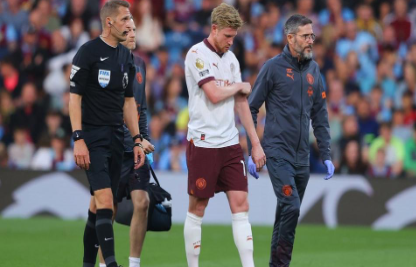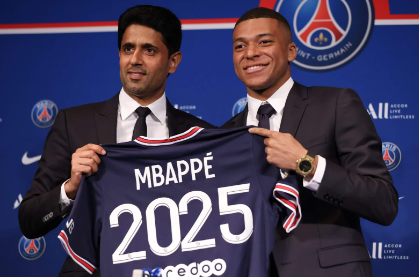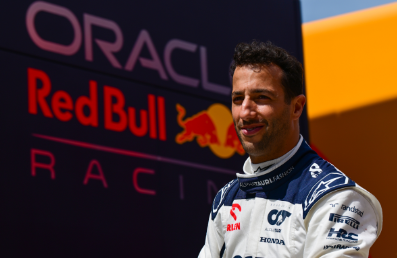Filed under:
Every week another star is forced to the bench with an injury, and every week there’s more talk of more matches being announced. Online discourse has largely consisted of two schools of thought, first that this increase in games is a greed based move that’s killing athletes careers, the second that these athletes are professionals and this is their job, injuries aren’t a reason to reduce matches. The truth, if you can call it that, actually lies somewhere between these two. More matches do increase the potential for injury but the reason for these added matches actually seems to be more fan than greed based, in the end sustainable play is more complicated than either side wants to believe.
One thing all but indisputable in this discussion is that more games creates more injuries. An NBC report found that as of matchweek 21 found 96 players with reported injuries. More games mean less recovery time which means muscles and ligaments get fatigued and when that happens they are at a higher risk for injury. Barcelona’s innovation hub in 2021 found that the likelihood for injury rises significantly if two matches are played within five days of each other. While the premier league alone does their best to space out games evenly they can’t and don’t account for the many other tournaments teams and players are a part of. Multiple times in the 2023-24 season we’ve seen teams have a domestic game then two days later a Champions League game.
As we see more big names either get injured or retire to lower leagues the influx of younger players could also be inflating the numbers of injuries. A US National Institute of Health study in 2016 found the number of injuries in elite youth is higher than longer standing older professionals. This makes sense considering younger players have less developed bodies and while yes they have more energy this can actually prove to be another challenge for their injury risk.
More than just more games the way teams play, especially in leagues like the premier league, is more physically involved. From box to box expectations to player intensive strategy we see more and more intensity from players. The growing popularity of positional play in the premier league is a big contributor to this, the strategy used by teams like Manchester City, Tottenham, Manchester United, and Arsenal is characterized by players reading the pitch and moving around each other requiring more movement and often more intense high power movement to cover any potential deficits. Teams like Liverpool, Newcastle, and Aston Villa use different strategies but face the same high power high intensity challenges on individuals. More matches, younger players, and a more physically demanding playing style will always create an environment where injuries are more likely.
More matches tend to be a highlight in the injury debate partially because it’s one of the few that can actually be regulated and controlled. UEFA announced that they would be changing the format of the Champions League to a table, which includes more teams and more games. This combined with growing international duties and the expansion of tournaments like the club world cup and domestic leagues cups are all putting major strain on schedules. There’s only so many days in the week and every league or tournament is focusing on their own scheduling often with little concern over how close matches are to each other. This scheduling snafu leaves players in the worst position with the least recovery.
Many blame these increasing matches on greed from governing bodies. After all, more matches means more money for them even if it means player injury. While this may be true considering we’ve seen interesting decisions from organizations like FIFA where they ended up on top financially it doesn’t seem to be the main driver for these games. The first thing it’s important to note is teams are for profit but governing bodies, the one’s typically making the schedules are not. UEFA, FIFA, and other decision makers don’t make a profit from more games. So if not for a better profit margin what for, the answer actually seems to be fans.
Fans own sports, these games belong to them. All profit for teams, all fame for players is reliant on people watching and largely enjoying the game. For a lot of leagues history and tradition is enough to maintain a base audience but stagnant often isn’t enough for these groups to feel comfortable. Sports Pro Media found that in 2022 the viewership in Germany and France dropped by around 2.5 million and found a 21% decline in US viewership. This decline was a major red flag for UEFA that something is wrong and that something needs to change if they want to maintain margins that allow for them to support teams, pay refs, and employees.
So what do they do when viewership is down, make something new and that’s exactly what they did. The risk to players however still exists with this new format but injuries and injury rates are hard to prove causation for. The large number of different situations mean while there is a positive correlation there isn’t enough evidence to point directly to causation. Speculation based on preexisting knowledge about the human body and with increased injury statistics is possible and does, as previously proved, highlight more games as a major cause but it isn’t a certainty. Looking at viewership however there is a certainty that if the same model is continued the viewership will continue to decrease. It makes sense to weigh the guaranteed loss over the potential.
If it isn’t just a matter of shaming out greed then how do we create a sustainable playing environment. Part of it has to do with ethical consumption, watching less matches that are too close together and advocating for prioritizing players over just entertainment. Beyond just that companies and organizations working towards creating more injury prevention and treatment techniques help players cope with something that will always be a part of sports. It’s largely because of fans that these games are being added, the need for more and more new content is a big driving force, so reducing that demand reduces the need to fill it.
At the end of the day more and more players are going out with potentially career altering injuries fans should want football to last and part of the way to do that is to critically think about whether more content is worth it. Greed is a part of our world but it isn’t only the corporations that are guilty of pushing players to the bench. On either side or even in between the injury debate we don’t find an answer. It's only until we look at the whole thing that we can piece together this puzzle.




